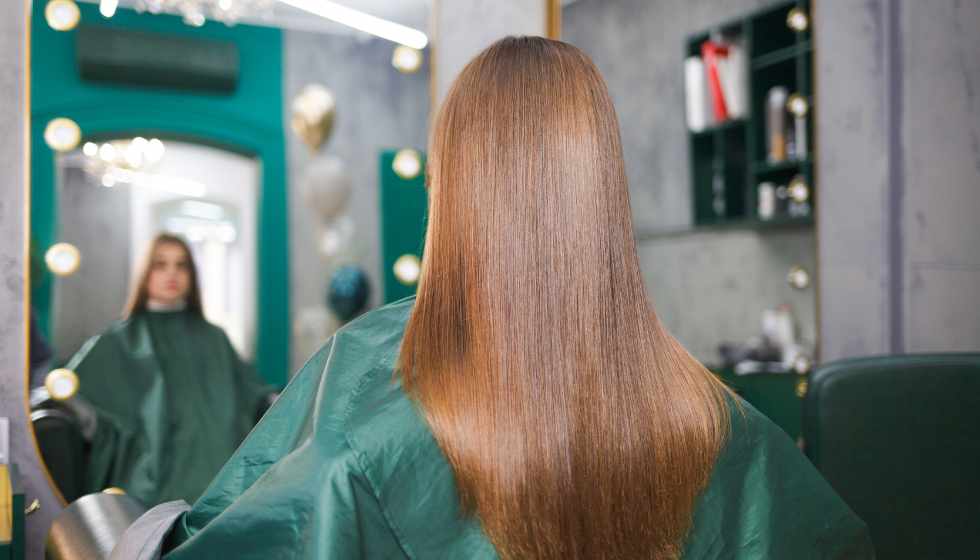Today, keratin is on everyone’s lips: in stores, they sell skin care cosmetics with it in the composition, and in beauty salons, they offer all kinds of procedures with the addition of this element. However, not all of them are as useful as they seem.
What is keratin for hair?
Keratin is the primary building block of hair; up to 90% of hair consists of this protein, and the remaining 10% is water, fats and pigments. Natural keratin gives the hair a healthy look, strengthens it, and protects it from an aggressive external environment. However, another keratin is added to cosmetics – it is synthesized from amino acids obtained from corn, wheat, soy, rice, sheep or goat hair.
The composition of keratin for hair
Sulfur, nitrogen, silicon and vitamin B6 produce keratin cosmetics. They are essential for synthesizing the amino acids that make up natural human keratin. The most important amino acids are alanine, glycine, cystine, methionine, and cysteine.
Why keratin for hair?
- Relieves brittleness;
- Contributes to the retention of moisture in the fibers;
- Makes hair soft to the touch;
- Gives shine;
- Increases elasticity;
- Makes more obedient.
Where is keratin used for hair?
Salon treatments for hair with keratin
Keratin straightening is the most popular keratin treatment. A unique product containing keratin is applied to the hair, after which the hair is dried and straightened using thermal tools such as a hair straightener.
Keratermia. Deep five-stage restoration of damaged hair.
Keratin perm. During this procedure, hair, after applying a keratin product, is wound on curlers.
Bixiplasty for hair. In addition to keratin, various oils are applied to the hair to nourish, moisturize and restore curls.
Keratin hair straightening: pros and cons.
Keratin hair straightening allows you to repair damaged hair and make it smoother and more manageable. Here are some benefits of keratin hair straightening.
- Hair straightening. The procedure helps smooth out bumps and waves in the hair, making it straighter and smoother.
- Elimination of fluffiness and curliness. Keratin hair straightening can reduce frizz and frizz and make hair more manageable.
- Hydration and nutrition. Keratin hair straightening products usually contain moisturizing and nourishing ingredients that help improve hair condition and prevent dryness and breakage.
- Long-term result. After keratin hair straightening, the results can last several months, depending on the hair type and how it is cared for.
However, it should be considered, experts warns, that keratin hair straightening can have some negative consequences.
- Volume loss. After the procedure, the hair may become less voluminous as keratin levels it and makes it flatter.
- Care restrictions. In the first few days after the procedure, it is not recommended to wash, curl or braid the hair so that the keratin can be completely absorbed.
- Harmful substances in the composition. Keratin cosmetics may contain certain chemicals, such as formaldehyde or its derivatives. They are used to fix keratin and create a long-term effect. However, formaldehyde can irritate the eyes, skin, and respiratory tract, trigger allergies, and be dangerous if misused.
- Inhomogeneous results. If the procedure is performed by a non-professional or using low-quality products, it can lead to uneven straightening or unpredictable textures.
After keratin straightening, avoiding chemical or permanent waving, hair coloring, flat irons, curling irons and other thermal tools are recommended.
Keratin for hair at home
- Shampoo. It helps smooth wrinkles and seal split ends.
- Mask. Its action is also aimed at preventing split ends and increasing the thickness and density of hair.
- Balm. It can be rinsed out or not, but regardless of this, it helps to make hair smooth and shiny. After a balm with keratin, the curls should be combed well.
- Spray. The moisturization helps shape the hair and protects it from high temperatures and ultraviolet radiation.
- Oils. Saturate the hair with keratin, restoring damaged curls along the entire length. When applying oil, experts advise avoiding contact with the scalp and roots.
- Expert Comments: An Alternative to Keratin
If you are looking for an alternative to keratin to improve the condition of your hair, you may want to consider the following options.
- Botox for hair. This is a procedure during which a special preparation based on botulinum toxin is used, which helps improve the hair’s condition and gives it shine and smoothness. Hair Botox can smooth hair, reduce frizz, and strengthen its structure. However, it does not change the texture of the hair and does not make them completely straight, like keratin straightening.
- Lamination of hair. The procedure involves applying a protective coating that helps strengthen the hair and give it a healthy shine. Lamination can make hair smoother and bouncier but does not change its texture.
- Natural masks and skin care products. To improve the condition of the hair, you can look at natural masks and products containing nourishing ingredients such as coconut oil, avocado and aloe vera. They can help restore and nourish hair, giving it a healthy look and shine.
- When choosing an alternative to keratin for hair, it is recommended to consider individual needs and hair type and consult a professional to get the best result.”


